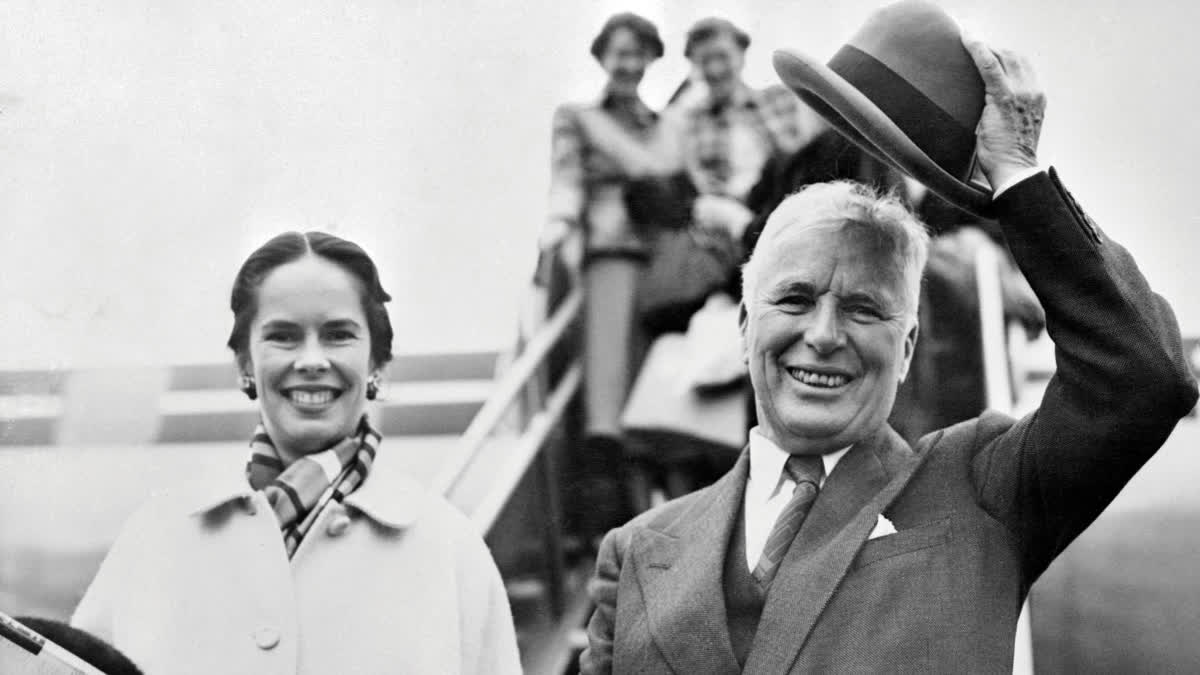Among Hollywood's storeyed romances, few tales are as captivating as that of legendary artiste Charlie Chaplin and actress Oona O'Neill. The year was 1942. Oona O'Neill, the 17-year-old daughter of renowned playwright Eugene O'Neill, was an aspiring actress navigating the treacherous waters of Hollywood.
She had already dated literary star J.D. Salinger (who wrote The Catcher In The Rye) and Citizen Kane writer-director Orson Welles. So, she was a subject of considerable interest in the gossip columns of the 40s. It was during this period that she crossed paths with Charlie Chaplin, then a 54-year-old cinematic icon, at a film audition.
Chaplin was captivated by Oona's “luminous beauty and sequestered charm,” as he later recounted in his autobiography. Oona, in turn, was struck by Chaplin's piercing blue eyes, writing to her friend Carol Matthau, “Just met Charlie Chaplin. What blue eyes he has!”
The couple married in secret on June 16, 1943. Oona had just turned 18. Chaplin was 54. The news sent shockwaves through both Hollywood and Oona's home. Her father, the famous Irish-American playwright Eugene O'Neill was the same age as Chaplin. He was so incensed by the union that he disinherited her.
Yet, against all odds, the marriage flourished. When Charlie Chaplin had decided to marry Oona after a brief courtship, he famously said: “Marry me to teach you how to live and you to teach me how to die.” She replied: “No Charlie, I will marry you so that you can teach me how to grow up and I will teach you how to be young until the end.”
Their pact came true. Over the course of their life together, Charlie and Oona welcomed eight children into the world, with their youngest, Christopher, being born when Chaplin was 73 years old. “I was constantly surprised by her sense of humour and tolerance,” Chaplin wrote of Oona in his autobiography. “She could always see the other person's point of view.” He also admitted to being smitten by “her luminous beauty and sequestered charm.”
Reflecting on their relationship, Chaplin wrote in his autobiography: “For the last twenty years I have known what happiness means. I have the good fortune to be married to a wonderful wife. I wish I could write more about this, but it involves love, and perfect love is the most beautiful of all frustrations because it is more than one can express.” He continued, “As I live with Oona, the depth and beauty of her character are a continual revelation to me.”
However, life was not without its challenges. Chaplin's outspoken political views, particularly his support for Russia during World War II, placed him at odds with the burgeoning anti-communist sentiment in the United States. Facing mounting pressure, the couple made the difficult decision to leave America, eventually settling in the serene environs of Corsier-sur-Vevey, Switzerland. In a further act of solidarity, Oona renounced her American citizenship and became a British subject to align herself with her husband's heritage. The couple returned to the United States only once, in 1972, when Chaplin was awarded a special achievement Oscar at the Academy Awards.
Chaplin passed away on Christmas Day in 1977 at the age of 88, leaving behind a legacy that continues to influence filmmakers and entertainers to this day. His wife became increasingly reclusive and struggled with alcoholism. Oona O'Neill Chaplin died from pancreatic cancer in 1991, at the age of 66, in the same Swiss village where she had shared so many years with her beloved Charlie.
Read more:



